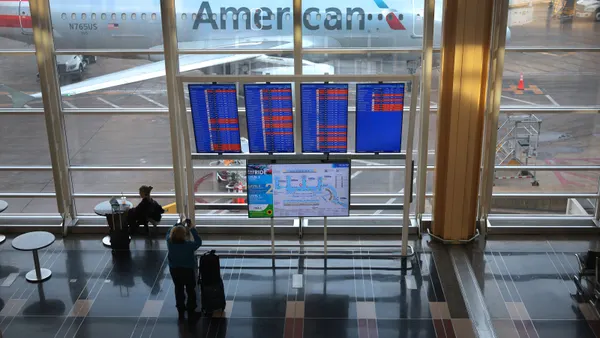Dive Brief:
- There is a loyalty perception gap between leaders and customers — 89% of executives say customer loyalty has increased in recent years, while only 39% of consumers agree, according to a survey released Monday by PwC.
- Just over half of shoppers say their most common reason to stop using or buying from a brand is a bad experience with its products or services, according to the survey of more than 5,500 consumers and 400 executives.
- “Executives often think loyalty is built during service interactions,” George Korizis, U.S. principal of customer and enterprise strategy at PwC, said in an email. “Customers tell us it’s decided much earlier — often the very first time they use the product. If you’re not measuring that early experience, you’re missing the biggest driver of loyalty.”
Dive Insight:
When it comes to loyalty, business leaders and their customers “are speaking different languages,” according to Korizis.
The gap between leaders and customers exists because executives are measuring behavior, while consumers describe it more like a feeling, according to Korizis. Repeat purchases don’t translate to actual loyalty if customers are only staying with you due to convenience or good prices.
“Executives look at metrics they control — repeat purchases, renewals, engagement scores — and by those numbers, loyalty looks strong,” Korizis said. “But customers define loyalty emotionally: Would I recommend this brand? Do I feel connected? Would I stay if a competitor offered something similar?”
Leaders are reporting problems with loyalty programs as well. Nearly 3 in 5 executives say their loyalty programs aren’t delivering the outcomes they need, according to the PwC survey.
The issue with loyalty programs is similar to the perception gap, according to Korizis. Executives are building loyalty programs around what companies want to track, not what their customers want out of membership.
“In our research, executives overwhelmingly said discounts and rebates are the core of loyalty programs,” Korizis said. “And yes — customers want those. But they also want things executives tend to underweight: exclusive access, community and experiences that feel designed for them personally.”
Additionally, nearly half of executives say their loyalty program will be obsolete within the next three years, according to the survey. This is because customer engagement has shifted, and consumers are relying on reviews, influencers, AI search and other tools in addition to company apps and websites — a reality Korizis calls the “experience supply chain.”
“Companies are investing heavily in loyalty mechanics inside their four walls, but customers are making decisions in spaces the company doesn’t control,” Korizis said.
Future proofing loyalty programs is a matter of designing them for the broader ecosystem in which customers operate, according to Korizis. Loyalty strategies should recognize that influencers and reviews matter as much as the app.
“The programs that survive will be the ones that fit how customers already want to engage, not ones that force them into a company-designed system,” Korizis said.










